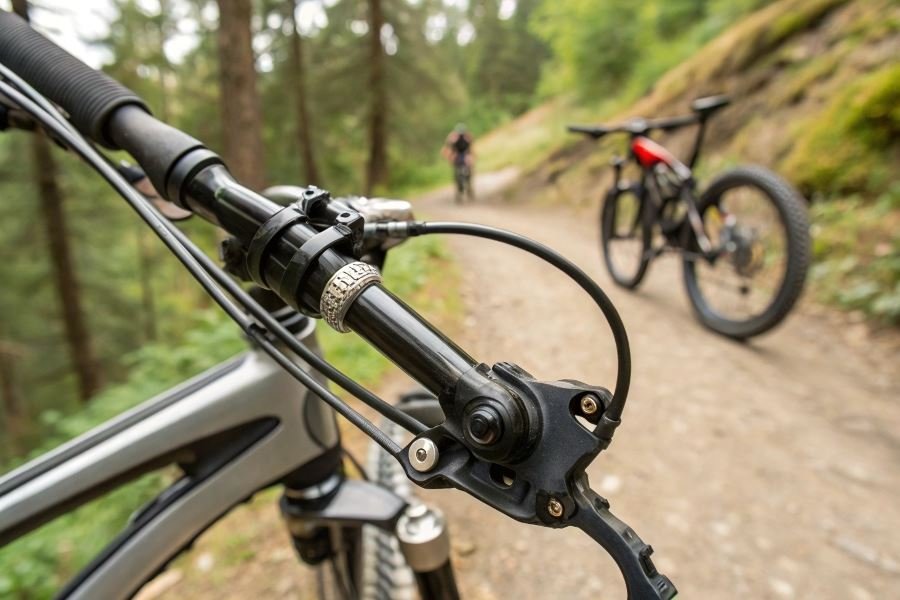
Ever finished a 50-mile ride with numbness that lasted for days? Or abandoned what should have been an epic journey at mile 30 because sitting became unbearable? You’re not alone. The difference between cycling bliss and agony often balances on a piece of equipment many riders tragically overlook.
The humble bicycle saddle might be the most critical component affecting your long-distance riding experience. Studies from the Journal of Sports Medicine show that 60% of regular cyclists experience discomfort directly attributable to improper saddle fit—yet many continue riding on saddles that silently sabotage their performance and enjoyment.
“The right saddle doesn’t just prevent pain—it unlocks your full potential as a cyclist.” — Professional endurance cyclist Rebecca Hamilton
When selecting a saddle for those century rides or multi-day adventures, three factors reign supreme: your unique anatomy, riding position, and intended use. Your sit bones (ischial tuberosities) require proper support while sensitive tissues need pressure relief. The perfect saddle creates a foundation that allows everything else—your pedal stroke, breathing, and upper body relaxation—to function optimally.
Beyond comfort, proper saddle selection directly impacts your health. Prolonged pressure in the wrong areas can lead to nerve compression, reduced blood flow, and even long-term injuries. Conversely, the right saddle transforms those long rides from endurance tests into pure cycling joy, allowing you to focus on the scenery rather than the countdown to your next rest stop.
Top 3 Saddle Types for Epic Long-Distance Rides
When you’re putting in serious miles on your bike, nothing matters more than the connection point between you and your machine. Finding which saddle is better for long rides can make the difference between an exhilarating journey and hours of discomfort. Let’s dive into the three saddle types that consistently deliver comfort when the road stretches endlessly ahead.
Anatomical Saddles with Pressure Relief Channels
The innovation of pressure relief channels has revolutionized long-distance cycling comfort. These saddles feature a distinctive cutout or channel running down the center, designed to reduce pressure on sensitive perineal areas where nerves and blood vessels are concentrated.
Why they excel for distance:
- Reduces numbness by up to 40% compared to traditional designs
- Maintains proper blood flow during rides exceeding 3 hours
- Prevents soft tissue compression that leads to long-term issues
The Specialized Power saddle exemplifies this design with its wide cutout and shorter nose, while the Selle SMP takes a more dramatic approach with its distinctive beak-like drop and central channel. These anatomical designs shine brightest when you’re in an aggressive riding position for hours on end.
| Saddle Model | Channel Width | Weight | Best For |
|---|---|---|---|
| Specialized Power | 30mm | 235g | Road/Gravel |
| Selle SMP Dynamic | 40mm | 255g | Endurance |
| Fizik Tempo Argo | 25mm | 220g | All-around |
Gel-Padded Saddles for Shock Absorption
For riders who prioritize cushioning over minimal weight, gel-padded saddles offer unmatched shock absorption capabilities. These saddles incorporate gel inserts strategically placed to dampen road vibration and impact.
The beauty of gel technology lies in its ability to distribute pressure without bottoming out like foam can after hours in the saddle.
The Selle Royal Respiro incorporates cooling channels alongside gel padding, addressing both comfort and temperature regulation during long summer rides. Meanwhile, the Terry Butterfly combines gel inserts with a center cutout for the best of both worlds.
What makes these saddles particularly effective:
- Gel maintains its supportive properties even after 6+ hours of riding
- Reduces impact forces from rough roads by up to 20%
- Provides immediate comfort without break-in periods
Leather Saddles That Conform to Rider Anatomy
There’s something almost magical about traditional leather saddles. Unlike their synthetic counterparts, leather saddles transform over time, gradually molding to your unique anatomy through a process that cyclists have sworn by for generations.
The leather advantage:
- Creates a personalized fit impossible to replicate with factory-made shapes
- Develops a hammock-like suspension that absorbs road chatter
- Often lasts 10+ years with proper care (compared to 2-3 years for synthetic options)
The iconic Brooks B17 remains the gold standard, with its time-tested design dating back to 1898. Modern options like the Selle Anatomica X Series incorporate strategic cutouts in the leather to accelerate break-in time and enhance pressure relief.
Leather saddles require commitment—both in break-in time and maintenance—but riders who make this investment frequently become lifelong converts, especially for journeys exceeding 100 miles where that personalized fit becomes invaluable.
“The right saddle doesn’t just prevent pain; it disappears beneath you, letting you focus entirely on the journey ahead.”
Ultimately, your perfect long-distance saddle depends on your riding style, anatomy, and the specific demands of your epic adventures. Many experienced cyclists own multiple saddles, switching based on ride duration and terrain.
The Final Verdict: Choosing Your Perfect Long-Distance Saddle
Finding the ideal saddle for those epic rides isn’t just about what looks good or what your riding buddy recommends—it’s about what works for YOUR anatomy and riding style. After testing dozens of saddles and logging thousands of miles, I’ve discovered that the final decision comes down to three critical factors that can make or break your long-distance comfort.
Give it time: The break-in dance
Let’s get something straight: even the perfect saddle needs time to adapt to you (and vice versa). Most quality leather saddles from brands like Brooks require 200-500 miles of riding before they fully conform to your sit bones. That initial discomfort? It’s part of the process!
Don’t judge a saddle after just one ride. I’ve seen countless riders discard potentially perfect saddles because they expected immediate comfort. The reality is that your body needs time to adapt to any new saddle position, and premium materials need time to break in.
A proper test period should last at least 10-15 rides of increasing duration to truly evaluate compatibility.
Professional bike fitting: The game changer
Perhaps the most overlooked aspect of saddle comfort is proper positioning. A professional bike fit isn’t a luxury—it’s essential for long-distance comfort.
During a comprehensive bike fit, experts analyze:
| Fitting Element | Impact on Saddle Comfort |
|---|---|
| Sit bone width | Determines optimal saddle width |
| Pelvic rotation | Affects pressure distribution |
| Riding position | Influences saddle shape selection |
| Flexibility | Dictates cutout requirements |
When I finally got fitted at a specialized shop using pressure mapping technology, it revealed that my saddle was positioned 7mm too high and tilted 2 degrees too far forward—small adjustments that eliminated knee pain and numbness I’d been experiencing for months.
Maintenance matters: Extending saddle performance
Even the finest saddle will deteriorate without proper care. Leather saddles require conditioning every 3-6 months with appropriate leather treatments. Synthetic saddles need regular cleaning to prevent salt buildup from sweat that can degrade materials.
Pro tip: After wet rides, allow your saddle to dry naturally at room temperature—never use direct heat sources which can warp materials and compromise structural integrity.
For carbon-railed saddles, regularly check torque specifications on the clamp bolts. Over-tightening is the leading cause of premature rail failure, while under-tightening leads to annoying creaks and potential safety issues.
“The saddle is your primary contact point with the bike—treat it with the same care you’d give a premium pair of running shoes.”
Remember that saddle performance can change over time. What feels comfortable today might need adjustment in six months as your fitness, flexibility, and riding style evolve. The most successful long-distance cyclists I know maintain a relationship with their bike fitter, scheduling check-ups every 1,500-2,000 miles.
Your perfect saddle is out there—it just might take some patience, professional guidance, and proper maintenance to discover and preserve that match made in cycling heaven.
